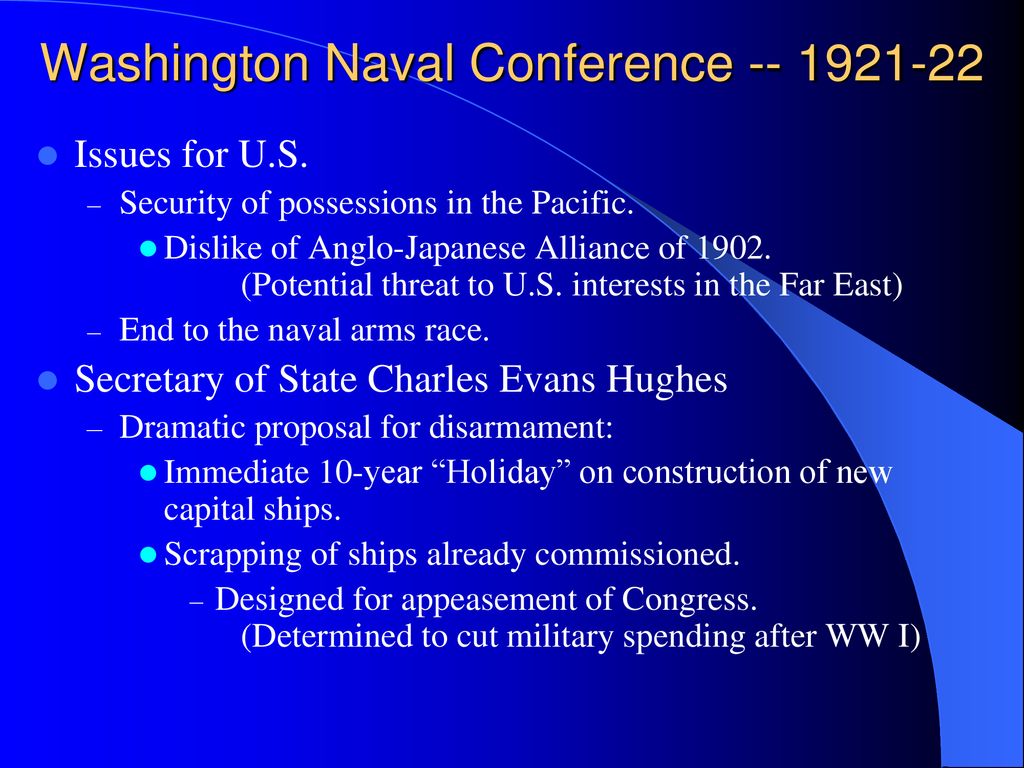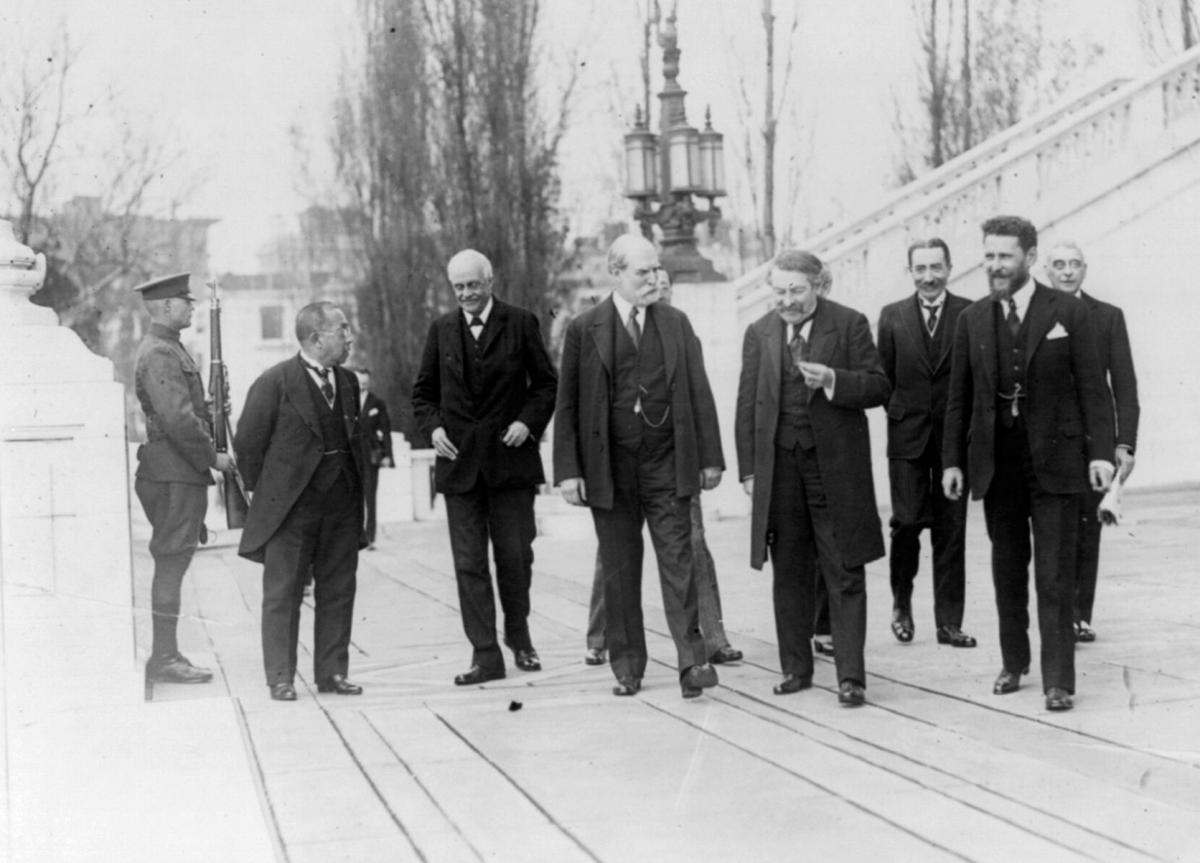Washington Conference Of 1921 - There may be some variation in any attempt to follow the rules of citation style. If you have questions, refer to the appropriate style manual or other resources.
Other titles: International Conference on Maritime Limits; Washington Conference on Arms Limitation Pacific Questions; Washington Naval Conference; Washington Conference on Disarmament in Washington
Washington Conference Of 1921

Encyclopaedia editors manage subject areas in which they have extensive knowledge, either through years of experience working on that subject or by studying a higher degree. They write new content and moderate content received from contributors.
Photo Members Of World Disarmament Conference, Washington, D.c. 1921 Men St
Washington Naval Conference, International Conference on Naval Limitation, (1921-22) An international conference organized by the United States to limit the naval arms race and create security agreements in the Pacific. A number of major and minor treaties were drafted and signed at the conference held in Washington, DC.
On December 13, 1921, the United States Great Britain The Four-Power Pact, signed by Japan and France, stipulates that all signatories "will consult each other in the event of a dispute concerning the Pacific question." The joint agreement states that they will respect each other's rights regarding the various Pacific islands and their rights. These agreements ensure that there is a consultative framework between the United States, Britain, and Japan. But the treaties are too vague to have any binding effect. Their chief importance was that they dissolved the Anglo-Japanese Alliance (1902; revised 1911), which had previously been a key means of maintaining the balance of power. East. Asia. Another paper defined Japan's "secret possessions and dominions."
United States Great Britain Japan On February 6, 1922, the Five Power Naval Limitation Treaty signed by France and Italy resulted from a proposal by US Secretary of State Charles Evans Hughes at the opening of the conference. There are nearly 1.9 million tons of warships owned by major powers. This bold disarmament proposal shocked the assembled delegates, but was actually implemented in a modified form. A detailed agreement was reached to determine the respective numbers and tonnages of capital ships to be possessed by the navies of each contracting nation. (Warships of more than 10,000 tons or capital ships carrying guns larger than 8 inches are usually designated battleships and aircraft carriers.) 5 in the United States and Britain; 3 for Japan and 1.67 each for France and Italy. The Five Powers Naval Limitation Treaty halted and diverted the race to build warships after World War I. 26 American ships; 24 British and 16 Japanese warships had to be removed and were under construction or under construction. Contracting nations have agreed to abandon their existing shipbuilding capital programs within 10 years, with some exceptions. Under another article of the treaty, United States Britain and Japan agreed to maintain the status quo regarding their forts and naval bases in the eastern Pacific.
The Naval Limitation Treaty remained in effect until the mid-1930s. At the time, Japan was trying to equal the United States and Britain in terms of the size and number of its capital ships. When this request was rejected by the other contracting states, Japan gave advance notice of its intention to terminate the treaty. Thus it ended at the end of 1936.
Chartbook #34 How We Paid For The War On Terror
Similarly, the five major powers signed a treaty to control the use of submarines and ban the use of poison gas.
Chemical Weapons in War). the netherlands Portugal In addition to Belgium and China, the nine-power agreement signed by the above-mentioned five powers is China's sovereign power. Independence and territorial integrity were confirmed and all countries were given equal trade rights. In a related treaty, the nine major powers formed an international commission to study China's tariff policies. The Washington Naval Conference, a disarmament conference called by the United States, was held in Washington DC on November 12 Held from 1921 to February 6, 1922.
Held outside the control of the League of Nations. It is participated by nine countries (United States, Japan, China, France, United Kingdom, Italy, Belgium, Netherlands and Portugal).

Germany had already disarmed under the terms of the Treaty of Versailles, so it was not invited to the conference. Soviet Russia was also not invited to the conference. It was the first arms control conference in history and is still studied by political scientists as a model for a successful disarmament movement.
Open Parks Network
Four Powers Treaty It led to the Five Power Treaty (the Washington Naval Treaty, the Nine Power Treaty, the Nine Power Treaty, and many smaller agreements). These treaties kept the peace in the 1920s, but did not change the increasingly hostile world of the Great Depression.
The popular mood in the world throughout the 1920s was peace and disarmament. Wom had recently won the right to vote in many countries, helping politicians to believe that they could avoid future wars by winning votes that would enrich them financially and stop the arms race.
Around the world, leaders of the women's suffrage movement established international organizations such as the International Council of Women and the International Woman Suffrage Alliance. According to historian Martin Pugh, they had their greatest influence in the 1920s; "It raised women's contribution to the anti-war movement throughout the Western world," he wrote.
In the United States, Almost all major Protestant denominations and prominent Protestant discourses are staunch supporters of international peace efforts. They work together to educate local churches about the need for peace and disarmament.
Pdf) Public Opinion For Peace: Tactics Of Peace Activists At The Washington Conference On Naval Armament (1921 1922)
At the end of World War I, Britain still had the largest fleet of naval vessels, but its large ships fell into disuse and the United States and Japan rapidly built new warships. Britain and Japan were allied in a treaty that was due to expire in 1922. While there are no immediate risks, observers are increasingly focused on the long-term US-Japan rivalry for control of the Pacific Ocean. . Therefore, The British decided it was better to write to Washington than Tokyo. without necessity Major nations have signed a series of naval disarmament agreements to stop a violent and dangerous arms race.
The American delegation, led by Secretary of State Charles Evans Hughes, included Elihu Root; Includes Hry Cabot Lodge and Oscar Underwood.
The latter is the leader of the Democratic minority in Sate. The main purpose of the conference was to prevent Japanese naval expansion in the western Pacific waters, especially regarding the fortifications of the strategically valuable islands. Its secondary objectives were to achieve a final limit to Japanese expansionism and to reduce potential anti-British concerns. They would obliterate the Anglo-American alliance by dissolving the Anglo-Japanese alliance, agreeing to Japan a comfortable naval ratio, and the Japanese would accept to officially adopt the Op Door Policy in China.

The British, however, took a more cautious and aggressive approach. In fact, British officials brought several aspirations to the conference: peace and stability in the Western Pacific; Avoid a naval arms race with the United States. Preventing the spread of cough cough to areas under Japanese influence; Singapore While maintaining the security of Hong Kong and the Dominion countries, they did not commit to a specific laundry list of demands at the conference. Instead, They brought a vague vision of what the Western Pacific would look like after an agreement.
The Washington Conference, 1921 22: Naval Rivalry, East Asian Stability And The Road To Pearl Harbor (diplomacy & Statecraft (paperback))
Japanese officials were more concrete than the British and approached the conference with two main goals: to sign a naval treaty with Britain and the United States and to obtain formal recognition of Japan's special interest in Manchuria and Mongolia. Japanese officials brought other issues to the conference: Yap; In addition to the strong need to keep control of Siberia and Tsingtao, there was growing concern about the growing US fleet in the Pacific.
By intercepting and encrypting the Japanese government's secret instructions to its delegation, the Americans' hand was strengthened. A message describing the minimum acceptable fleet ratio for Tokyo; American negotiators used that knowledge to push the Japanese. This success led to the growth of such agencies in a series of attempts by the U.S. government to exploit eavesdropping and privacy technology.
The head of the Japanese delegation at the Washington Naval Conference was Prince Iyesato Tokugawa. During the first four decades of the twentieth century, the United States He led a political movement in Japan that promoted democracy and international friendship in Europe and Asia. His influence was evident in the negotiation and ratification of the Washington Naval Treaty.
To resolve technical disputes regarding quality
Post A Comment:
0 comments so far,add yours